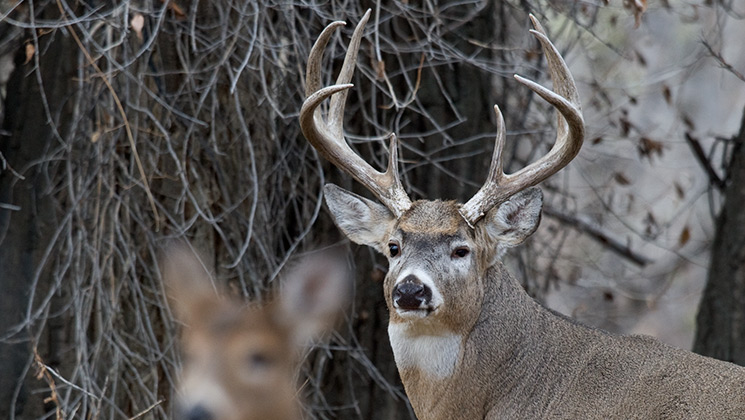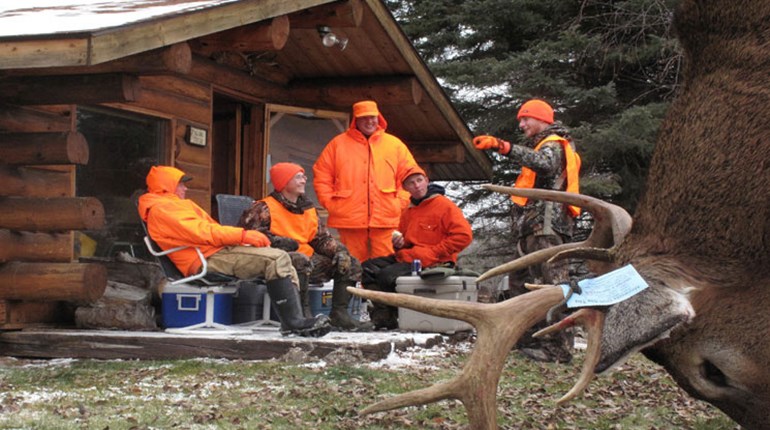
Again and again, GPS-collar movement studies of whitetails find that mature bucks are individuals. There are types, sure. Just as some middle-aged men are homebodies and others like to be out and about, there are categories we can put bucks in—but that really doesn’t help you decipher the specific pattern of an individual deer.
Though that’s the reality, movement studies of specific mature bucks in a number of states are revealing some important points to keep in mind during this deer season, especially as the rut draws near. Here are a few things these studies are teaching us that can help you adjust your stand placement, and may even encourage you to think a little more out of the box to waylay the biggest buck in your neighborhood.
Hunt Rut Funnels
During the rut, mature bucks often go on what wildlife biologists call “excursions.” These are short walkabouts of typically less than 24 hours when bucks leave their usual range in search of estrous does. Brian Murphy, CEO of the Quality Deer Management Association, says, “Two recent studies, where researchers were following collared bucks, showed this tendency. A study of 15 collared bucks in Georgia found that 58 percent of them did this during the rut; another of 16 collared bucks in Texas found that all the bucks went on excursions. Some of these bucks went 6, 8 or even more miles in a 24-hour period as they roamed looking for does.”
This makes even old, savvy bucks particularly vulnerable during the search phases of the rut—before peak breeding when only a few does are in estrus and after the peak when only a few does are still in heat. Mature bucks in areas without that many other older bucks tend to be mostly hunkered down attending to does during the rut’s peak-breeding. At those times when they are searching, mature bucks can be had in daylight.
University of Tennessee whitetail researcher Seth Basinger recorded the first wild hookup between a collared buck and collared doe on the 39,000-acre Arnold Air Force Base on Nov. 19, 2010. The buck and doe stayed together for just 12 hours. Both deer actually left their normal home ranges to breed. GPS data showed the buck left its typical range and found the doe at 9 a.m. They stayed in cover and bred all day. But by 9 p.m. that evening, the buck was cruising far away on the other side of woodlots and fields.
The best stand at these times is in a rut funnel, a place between bedding areas. Often these places are power-line rights of way, riparian areas, strips of cover between woodlots or drainages that connect larger wooded areas in suburbia. These can be easy to spot on maps and aerial photos. Rut funnels might not have a lot of deer sign in them during most of the year, but during the search phases bucks use them frequently.
Focus on His Range As bucks get older, their home ranges and core areas (the acres within their home range where they spend most daylight hours) tend to shrink. A recent study done by Mickey W. Hellickson in Texas found that home ranges of bucks shrank from 2,278 acres at 2.5 years old to 1,055 acres at 7.5. Also, the bucks’ core areas fell from 356 acres to 151 for these same age classes. A buck’s range varies in size, however, the fact that a buck’s core area shrinks is important to know. By maturity, a buck has found where he is safe in daylight and tends to stay there unless he is pushed out by hunters or pulled out by his drive to breed.
“If you’re outside a buck’s core by even a little bit you’re not likely to see that buck,” Murphy says.
Many GPS-collar studies have also shown that bucks don’t have ranges shaped like you might expect. Some even have dumbbell-shaped ranges: They use two separate pieces of habitat linked together by a funnel.
A buck study on public land in Pennsylvania even found that a particular buck shifted, week by week, during November from one side of his range to another. During the first week of November, he was roving mostly on one side of his mountainous range, but during much of the second week this collared 8-pointer was almost exclusively holed up in a drainage breeding does. Then, in the third and fourth weeks of November, the buck shifted to the other side of his range. This shows that a hunter needs to be patient and that it can be helpful to have more than one stand in a buck’s range.
Consider Pressure
All of this, of course, is influenced by not just the rut, but also hunting pressure. A hunting-pressure study done in south-central Oklahoma on a 4,600-acre area found that when there was one hunter per 250 acres on a 1,500-acre parcel, buck movement in daylight wasn’t affected very much. However, on another conjoining 1,500-acre study section that had one hunter per 75 acres, most of the bucks stopped moving in daylight.
While you can’t control pressure from other hunters on public land or in areas where numerous landowners have small properties, such studies suggest you should be careful about your own impact. Auburn University researcher Clint McCoy compared where bucks walked in relation to known stand locations, and he found that they moved, on average, 55 yards farther from the known stands when he compared the beginning of hunting season to the end. Part of choosing and hunting a stand, even in the rut, is making sure a buck doesn’t know you’re there.
Murphy says, “A lot of GPS-collar studies of mature whitetails show that when the gun season starts, big bucks quickly figure this out and stop using open areas. As hunters we know this, but it is interesting to see it happen with collared-buck studies, because when you plot the GPS coordinates you can see the bucks move over an aerial photo like a Green Beret evading enemy detection. They still want to move and breed, but they reduce daylight activity and use cover expertly.”


































